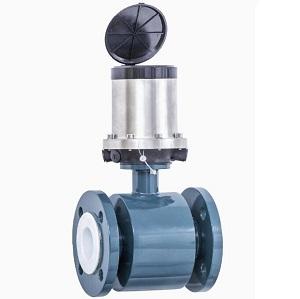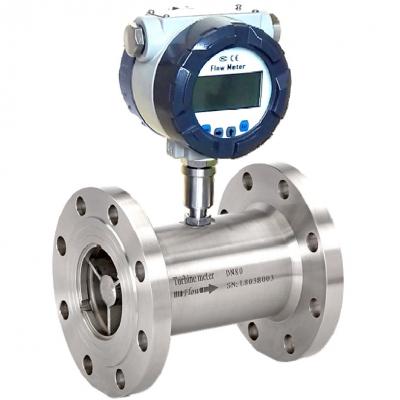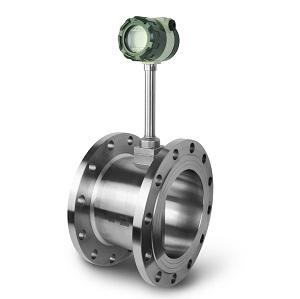In today's industrial and commercial landscape, accurate measurement of fluid flow is crucial. Imagine a device that not only measures flow rates but also does so without needing a constant power supply. Enter battery-operated flow meters, offering portability and convenience for diverse applications.
1. What are Battery-Powered Flow Meters ?
Battery-operated flow meters are ingenious flow measurement devices used to gauge the flow of liquids or gases. What sets them apart is their ability to function independently, thanks to batteries. This self-sufficiency makes them incredibly versatile, as they can be used in a variety of settings where a power source might be scarce.
2. How that battery operated flow meters work?
These flow meters powered by battery come in various types, each with its own unique way of measuring flow. From battery operated electromagnetic flow meter to battery powered turbine flow meters, the options are diverse. The fluid passing through the meter interacts with sensors or components within, providing accurate flow readings.
3. Portability and Flexibility:
One of the most significant advantages of battery-operated flow meters is their portability. No longer tied to power outlets, these meters can be taken to remote locations or used on-the-go, making them ideal for fieldwork.
4. Battery Life and Maintenance:
The battery life of these devices varies based on the type of batteries used and usage frequency. Regular maintenance, including monitoring battery levels and timely replacements, is essential to ensure uninterrupted functionality. Normally Silver Automation Instruments sell battery flow meters can be running for 1-1.5 years continuously.
5. Applications of battery powered flow meters:
Battery-operated flow meters find applications across diverse industries. Whether it's managing water resources, monitoring oil and gas flow, ensuring proper chemical processing, or optimizing agricultural processes, these meters play a vital role.
6. Data Handling and Connectivity:
Modern battery-operated flow meters often come equipped with data logging features. They can store valuable measurement data, making it accessible for analysis. Some can even transmit data wirelessly for real-time monitoring and seamless integration with other systems.
In conclusion, battery-powered flow meters offer a practical and efficient solution for measuring flow rates without the need for a constant power supply. Their versatility and portability make them invaluable tools across various industries, ensuring accurate and reliable flow measurements wherever they are deployed. Stay powered, stay flowing!
Battery operated flow meter types
Here we list three types normal used battery operated flow meters
Battery-Operated Turbine Flow Meter for Liquid or Gas:
A battery-operated turbine flow meter is a convenient solution for measuring the flow of liquids or gases. The turbine within spins as the fluid or gas passes through, generating data that is then used to calculate the flow rate. With the added benefit of being battery-powered, it offers flexibility in various settings where access to a power source might be limited. This makes it a versatile choice for applications that require accurate flow measurements on the go.
Battery-Operated Magnetic Flow Meter for Conductive Liquid:
The battery-operated magnetic flow meter is a powerful tool for measuring the flow of conductive liquids. It utilizes the principles of electromagnetism to gauge the flow rate accurately. By employing a magnetic field and measuring the induced voltage, it provides precise readings. Being battery-powered mag flow meter enhances its usability, especially in locations where a consistent power supply is a challenge. This combination of magnetic flow measurement and battery operation ensures reliable and efficient monitoring of conductive liquid flow.
Battery-Operated Variable Area Flow Meter:
A battery-operated variable area flow meter is a dynamic solution for measuring fluid flow. It operates on the principle of a float moving within a tapered tube, where the position of the float signifies the flow rate. Battery power ensures its functionality and allows for flexibility in deployment, making it suitable for remote or portable applications. This type of flow meter offers a visual representation of flow and is a reliable choice for monitoring fluid flow in various industrial and field-based scenarios.

 Battery Powered Magnetic Flow Meter2018/11/23Battery powered magmeter can measure conductive medium,such as water ,sewage and so on.The battery can work 3-6 years and size from1/2"to 40".IP68,RS485,0.25% accuracy option.VIEW
Battery Powered Magnetic Flow Meter2018/11/23Battery powered magmeter can measure conductive medium,such as water ,sewage and so on.The battery can work 3-6 years and size from1/2"to 40".IP68,RS485,0.25% accuracy option.VIEW Battery operated liquid turbine flow meter2019/05/273.6V lithium battery operated.
Battery operated liquid turbine flow meter2019/05/273.6V lithium battery operated. Mechanical register oval gear flow meter2019/07/09Mechanical counter oval gear flow meter is a kind of in-line positive displacement flow meter where main power is impossible in the field or the field only request basic metering, no output transmissi...VIEW
Mechanical register oval gear flow meter2019/07/09Mechanical counter oval gear flow meter is a kind of in-line positive displacement flow meter where main power is impossible in the field or the field only request basic metering, no output transmissi...VIEW Metal tube rotameter for corrosive liquid2019/06/08Teflon (PTFE) lined metal tube rotameter/ variable area flow meter is suitable for aggressive fluids measurement. It is a traditional and classic flow metering technology which is used in many applica...VIEW
Metal tube rotameter for corrosive liquid2019/06/08Teflon (PTFE) lined metal tube rotameter/ variable area flow meter is suitable for aggressive fluids measurement. It is a traditional and classic flow metering technology which is used in many applica...VIEW Liquid Turbine Flow Meter2017/04/12Liquid Turbine flow meter is a kind of low cost digital flow meter for diesel ,petrol,water,palm oil. it is for clean, low viscosity ,non-corrosive liquid.VIEW
Liquid Turbine Flow Meter2017/04/12Liquid Turbine flow meter is a kind of low cost digital flow meter for diesel ,petrol,water,palm oil. it is for clean, low viscosity ,non-corrosive liquid.VIEW Vortex flow meter for natural gas2020/02/02What Is Natural Gas?Natural gas is a combination of gases thatexist rich in hydrocarbons. Natural gases such as methane, nitrogen, and carbondioxide also found in the air. Natural gas reserves are dee...VIEW
Vortex flow meter for natural gas2020/02/02What Is Natural Gas?Natural gas is a combination of gases thatexist rich in hydrocarbons. Natural gases such as methane, nitrogen, and carbondioxide also found in the air. Natural gas reserves are dee...VIEW